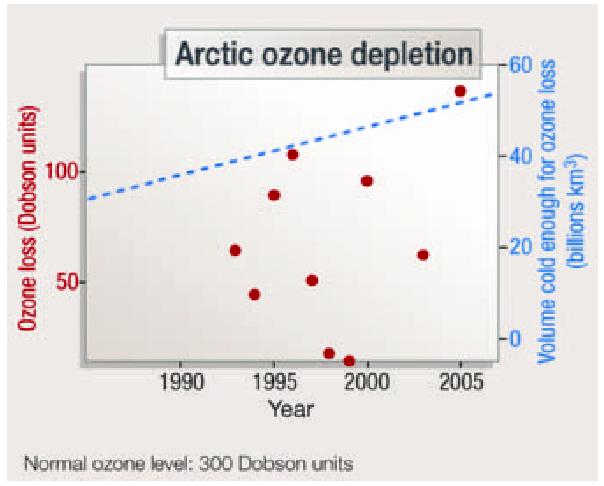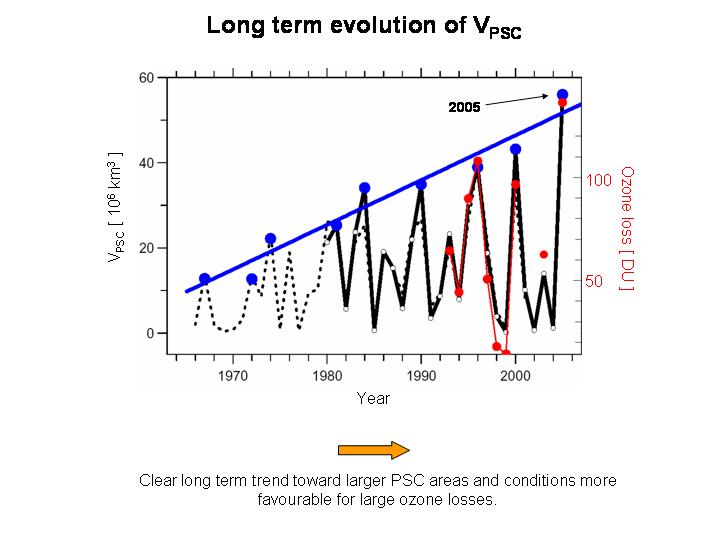There has been an overwhelming popular demand for us to weigh in on recent reports in the Times Britain faces big chill as ocean current slows and CNN Changes in Gulf Stream could chill Europe (note the interesting shift in geographical perspective!).
Archives for May 2005
Tropical Glacier Retreat
In a previous post entitled Worldwide Glacier Retreat, we highlighted the results of a study by J. Oerlemans, who compiled glacier data from around the world and used them to estimate temperature change over the last ~400 years. A question that arose in subsequent online discussion was to what extent Oerlemans had relied on glaciers from tropical regions (answer: he didn’t), and what the reasons are behind retreat of glaciers in these regions. Raymond Pierrehumbert, a climate dynamicist at the University of Chicago, kindly offered to write a guest editorial to further clarify what we do and don’t know about tropical glacier retreat. Pierrehumbert’s editorial follows below. –eric
1. INTRODUCTION
The Tropics, loosely defined as the region from 30N to 30S latitude, make up nearly half the surface area of the Earth; they are home to 70% of its people, and the vast majority of its biological diversity. Moreover, the tropical region is the “accumulation zone” for the Earth’s energy balance, with a great deal of excess solar energy being exported to help warm the rest of the planet. Detection and characterization of climate change in the Tropics is therefore a matter of great concern. Assessing the ability of climate models to reproduce this change is an important part of determining the fidelity with which the models can be expected to forecast the way climate will change in response to future increases in greenhouse gas content.
Figure 1: The Qori Kallis Glacier in the Peruvian Andes
A critique on Veizer’s Celestial Climate Driver
In a paper in Geoscience Canada, Veizer (2005) states that ‘the multitude of empirical observations favours celestial phenomena as the most important driver of terrestrial climate on most time scales‘. This paper was cited by a contributor to a debate on the website openDemocracy . In short, the argument is that the cosmic ray flux (CRF, also denoted as ‘GCR’ – galactic cosmic rays – in some papers) is the most important factor affecting our climate. Since this issue is likely to crop up from time to time, it is worth taking a closer look at the Veizer (2005) paper ( Here is a link to short summary, but the actual paper requires subscription). [Update: The actual paper is now available as supplemental material on the Geoscience Canada website.] I will try to show that CRF explanation for the recent global warming is easy to rule out.
[Read more…] about A critique on Veizer’s Celestial Climate Driver
Global Dimming may have a brighter future
A while ago, we wrote about Global Dimming – a reduction in downward solar radiation of about 4% or about 7W/m2 from 1961 to 1990 was found at stations worldwide. We said at the time that there were hints of a recovery underway post-1990; now research has been published showing this. From Dimming to Brightening: Decadal Changes in Solar Radiation at Earth’s Surface by Martin Wild et al. (Science 6 May 2005; 308: 847-850; subscription required for link) uses surface measurements; Do Satellites Detect Trends in Surface Solar Radiation? by Pinker et al., Science 2005 308: 850-854 uses satellites; both find a recovery of surface downward radiation since about 1990.
[Read more…] about Global Dimming may have a brighter future
“New Analysis Reproduces Graph of Late 20th Century Temperature Rise”
To our readers who have followed the supposed ‘hockey stick controversy’, this press release from NCAR just out today, will be of interest.
2005 Record Arctic Ozone Loss
You read it here first!
Update (09/05/05): Markus Rex was kind enough to send us the full figure from which Nature made their thumbnail, and which is a little clearer. He also cautions that the 2005 numbers are still preliminary, however there is a clear trend towards increasing potential for Arctic ozone loss, which is realised or not depending on the vagaries of each individual winter.
Storms and Climate Change
The Atlantic hurricane season will soon be upon us again , and no doubt many people will recall last year’s devastating Hurricanes that swept across Florida. There was a great deal of press about these storms, as 3 major hurricanes and 5 tropical storms made landfall in the US. According to HurricaneProtection.com, the last time eight different tropical cyclones impacted the United States coastline in a single season was 1916. There were a total of 15 tropical storms and hurricanes, which means that the total number of storms that year was higher than 95% of the previous years of hurricane observations. There was also a record number of Typhoons over Japan in 2004 (10! The previous record was 6 from 1996) . Typhoons are the same as Hurricanes, but have a different name over the Indian ocean and the western Pacific. They are also known as ‘tropical cyclones’. Furthermore, it was the first time that a tropical cyclone had been observed in the south Atlantic (see WMO Climate News, Jan 2005, p. 12)! So, what’s going on?
Planetary energy imbalance?
The recent paper in Science Express by Hansen et al (on which I am a co-author) has garnered quite a lot of press attention and has been described as the ‘smoking gun’ for anthropogenic climate change. We have discussed many of the relevant issues here before, but it may be useful to go over the arguments again here.
The key points of the paper are that: i) model simulations with 20th century forcings are able to match the surface air temperature record, ii) they also match the measured changes of ocean heat content over the last decade, iii) the implied planetary imbalance (the amount of excess energy the Earth is currently absorbing) which is roughly equal to the ocean heat uptake, is significant and growing, and iv) this implies both that there is significant heating “in the pipeline”, and that there is an important lag in the climate’s full response to changes in the forcing.
Technical problem apology
Due to some odd behaviour with our blog software, many people have had problems this week posting comments. We would like to apologise to our readers if they encountered these problems (bizarre redirections and WordPress login screens appearing where they shouldn’t).
We appear to have fixed the problem (fix from here for those interested), but please let us know if anything weird or unusual continues to occur. Thanks for your patience.
Normal service will resume after the break.



